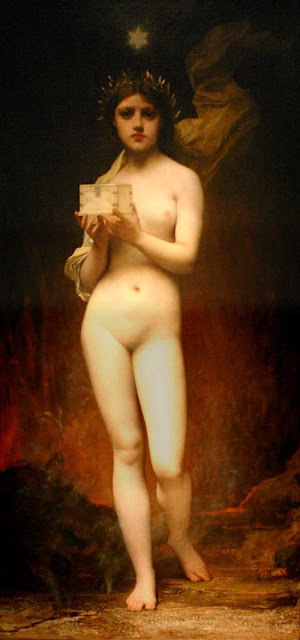Image: Pandora (1872), oil on canvas painting by French painter Jules Joseph Lefebvre (1836-1911).
Image: The Grasshopper (La Cigale), 1872 oil on canvas painting by French figure painter Jules Joseph Lefebvre (1836-1911), measurements 186.7 cm x 123.8 cm, currently located at National Gallery of Victoria, Victoria, Australia. The original note found with this image says, this painting is inspired by the fable of Aesop from The Grasshopper and the Ant or The Cicada and the Ant by Jean de La Fontaine.
The myth of Pandora is quite ancient, appearing in several Greek legends and works, and has been interpreted in many ways. In seventh century BC, Hesiod gave the earliest literary version of Pandora’s story.
Pandora was the first woman created by gods, according to Greek mythology. According to Hesiod, each god helped create Pandora by giving her unique gifts. Zeus ordered Hephaestus to mould her out of Earth as a punishment for mankind for theft of the secret of fire by Prometheus. All the gods offered her seductive gifts. Her other name, inscribed on a white-ground kylix in the British Museum, is Anesidora. Pandora’s jar (pithos) is often mistranslated as ‘Pandora's box’. According to myths, every time Pandora opened her pithos/ jar/ box she released all the evils for mankind, leaving only “hope” inside once she had closed it again. She opened the jar out of simple curiosity and not as a malicious act. According to some pessimistic interpretations, all the evils in the world were scattered from Pandora's jar, while the one potentially mitigating force, “hope”, remains locked securely inside.

No comments:
Post a Comment